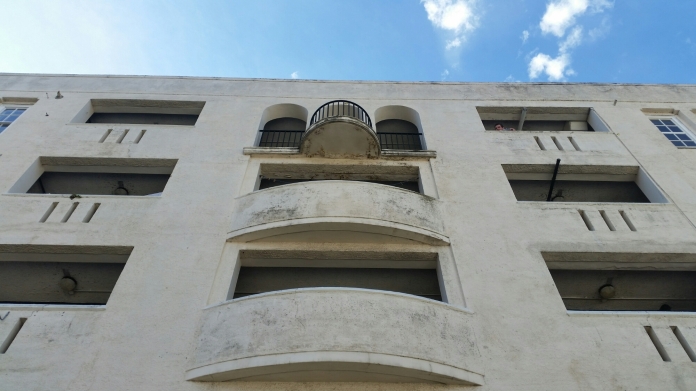I have been wondering whether or not to post photographs of Devonshire trees. But am now doing so as a record of their autumn magnificence:-
Monthly Archives: September 2015
Albert Irvin RA
I wish I had known Bert Irvin better. He had a studio just down the road on Stepney Green, upstairs in an old Jewish School. But I never saw it. I only saw him at gatherings at the RA, where, I now realise, he was a central figure of the postwar generation whose experience of art was formed by exhibitions of Abstract Expressionism at the Whitechapel and Tate. One of a group who met at Northampton School of Art in the early 1940s. 400 people came to pay their respects at the memorial event at Tate Britain which is testimony to how much he was liked and his work admired.

Albert Irvin RA, Blue Anchor, 1989. Acrylic on canvas. 2130 x 3050 mm. © Royal Academy Collection.

Chatsworth (8)
Having burdened my readers with multiple posts about Chatsworth last week, and particularly about the garden statuary, I am now able to say, thanks to information supplied by the Chatsworth archive, that none of the statues I photographed are from the original garden layout. The original statues were presumably cleared away in the fashion for the picturesque later in the eighteenth century. Those that are in the garden now were all bought by the sixth Duke who was a passionate and knowledgeable collector of sculpture both for his Sculpture Gallery and outdoors.
Diana and Apollo are recorded as being on the South Lawn in the sixth Duke’s diary on 20 February 1841. They were bought from Francesco Bienaimé on 2 March 1841 (£100 each):-
Dingle’s Fairground Museum
In the afternoon I walked through the Devon countryside to the local farm which has been converted into a museum of the fairground with ageing dodgems and roundabouts which have been rescued from street fairs, complete with detailed provenance, and ancient one-armed bandits from the 1930s which were legalised in 1960:-
Early morning in Devon
I got up early to see the first light frost on the grass, the newly cut hay below the lawn and the trees in early autumn:-
Hauser and Wirth, Somerset (3)
I think it’s my fourth visit to Hauser and Wirth in Somerset, a good place to stop after the long haul down the A303 and the invariable long wait by Stonehenge: such delicious food in the Roth Bar & Grill, the planting in the Piet Oudolf garden growing to maturity, and the added incentive on this occasion of an exhibition, thoughtful, serious and allusive, by Jenny Holzer.
These are works by Holzer:-
Edmund de Waal (3)
Today we’re celebrating a small installation in our Library to coincide with the publication of Edmund de Waal’s new book, White. There is something appropriately serious and thoughtful to it only being a small group of choice objects, some of them selected from, and all of them incorporated in, Jim Cadbury-Brown’s great historical/modernist library space. Morandi and John Cage, Tristram Shandy and Rachel Whiteread, an Ai Weiwei marble lantern set into one of the bookcases and discreet vitrines of Edmund’s own work. But no photographs and only fifty people an hour, four days a week, bookable in advance, and concerts by the Aurora Orchestra to accompany it.
Somers Town
Until yesterday I wasn’t really familiar with the area known as Somers Town, which was called after Charles Cocks, Lord Somers, and was developed during the 1780s to the north of the so-called New Road (now the Euston Road) and south of the Regent’s Canal. Once an area of market gardens, it was originally a middle class neighbourhood, but went rapidly downhill when the big railway termini arrived, together with the Irish navvies required to build them. Now it’s an area of social housing, where life expectancy is apparently ten years less than in Hampstead:-
St. Pancras Station
One of the pleasures of visiting the Crick Institute was the opportunity to see the great roof of St. Pancras station, designed by William Henry Barlow, the Chief Engineer of the Midland Railway Company, up close. When it opened in 1868, it was the widest roof span in the world:-
Francis Crick Institute
I drove past the Francis Crick Institute recently which is rising immediately to the north of the British Library and was impressed by its scale, its grand barrel-vaulted roof and its use of terracotta to reflect, but not replicate, Sandy Wilson’s use of brick in the British Library. So, I was pleased to be invited to go on a site tour by Larry Malcic of HOK, who has overseen its design and construction. It is indeed a huge project – ‘a cathedral of science’ as its Director, Sir Paul Nurse, calls it – broken up into four quarters, all open plan, with tiny offices for the Principal Investigators, in order to encourage social interaction:-
















You must be logged in to post a comment.